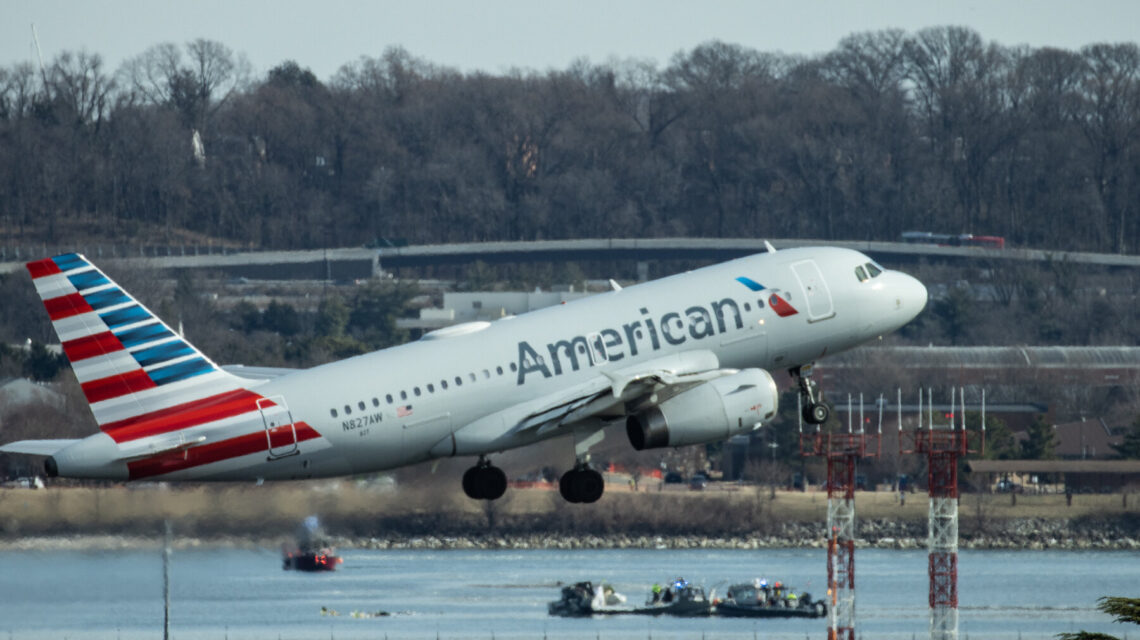Introduction
A civilian American Airlines regional jetliner (operated by PSA Airlines) got into a mid-air collision with a Black Hawk helicopter on Wednesday. The American Airlines crash in 2001 serves as one of the deadliest modern air disasters in America – claiming 67 lives in close proximity to the Washington D.C. airport. This crash, together with the recent Black Hawk and American Airlines Jet collision, has sparked scrutiny into aviation safety measures – Bothe cases still under investigation with the FAA. Also, this recent collision between the jet and helicopter adds on to the deathly statistic saying there has been a 0% improvement of aviation safety compliance during the last two decades.
In this brief, I will outline the events preceding the American Airlines crash, the current development of the investigation, and the new details which could improve security for the future in aviation.
What Happened?
Timeline of Events
While flying twenty miles away from the airport – an American Airlines Bombardier CRJ-700 civilian aircraft collided with a Black Hawk helicopter while simultaneously attempting to land on the National Airport’s Runway 33 Boeing at 300 feet altitude.
The Sikorsky H-60 Black Hawk whirlybird was on an annual routine proficiencies training. It was doing so in accordance with D.C. airspace rules, which specifies that helicopters operate underneath a flight level of two hundred feet. But the concern remained whether or not the Black Hawk was abiding to these limits.
All sixty-four civilian passengers and crew riding the jet, as well as three crew members on the helicopter, perished in the American Airlines heart-rending collision. The impact caused a massive explosion and while the jet was over the Potomac river, it set ablaze everything around.
Aircraft and Flight Route Overview
American Airlines Flight 5342
Aircraft Model: Bombardier CRJ-700
Operating Airline: PSA Airlines (American Eagle subsidiary)
Flight Path: Final Approach Reagan National Airport
Black Hawk Helicopter
Aircraft Model: Sikorsky H-60
Purpose of Flight: Military Proficiency Training
Initial Official Statements
While discussing the Accident, NTSB member Todd Inman stressed the need for the so-called `Swiss cheese approach`, where accidents are averted through the use of multiple fail safes. In his words, this collision would have normally breached several redundant layers making this event concerning for an industry that has always been remarkably safe over the years.
Secretary of Defense Pete Hegseth pointed out that the height of the helicopter seems to be above the lower limit set at 200 feet, but this is still a subject of investigation.
Causes Behind the American Airlines Crash
Preliminary Investigation Findings
Several factors are under scrutiny to determine the root cause of the American Airlines Crash. Investigators are examining potential errors in altitude adherence, air traffic control protocols, and mechanical malfunctions. The flight and voice recorders recovered from both aircraft are undergoing detailed analysis to uncover critical data.
Possible Mechanical Failures
While no definitive evidence of a mechanical failure has emerged, experts are thoroughly inspecting both aircraft for potential system malfunctions. The recovered flight data recorders will play a crucial role in assessing whether technical issues contributed to the American Airlines Crash.
Human Error and Air Traffic Control Factors
FAA records indicate that staffing at Reagan National Airport was below standard levels on the night of the accident. A controller responsible for overseeing helicopter traffic reportedly left their shift early, leaving a single individual to manage both airplane and helicopter operations. This staffing shortage raises concerns about whether adequate oversight was in place.
Additionally, investigators are evaluating whether communication lapses occurred between air traffic control and the two aircraft, particularly given the complexity of the airspace near Washington, D.C. Any miscommunication could have been a contributing factor to the American Airlines Crash.
Impact of the Crash
Casualties and Recovery Efforts
The American Airlines Crash has been categorized as one of the airline tragedies that took place in the US over 20 years ago, with the loss of 67 passengers. So far, 41 bodies were recovered, with 28 confirmed dead. The operations are still underway to see if any further remains can be retrived, alongside debris that was recovered from the sunken aircraft in the river.
Effects on Airline Operations
As a result of the investigations after the crash, normal operations at Reagan National Airport have been restricted, leading to further cancellation of travelers’ flights. As of now, internal estimates claim that over 100 flights have had to be cancelled due to the changes at the airport, with plans to operate only 2 out of the 3 runways. Airport officals have remarked that these operational changes will focus on normalization in a little over a week.
Passenger Safety Concerns
There has been an increased concern regarding safety of the passengers after the American Airlines crash and its implications. The US didnt have any fatal commercial airplane crashes since the year 2009, which created this situation to be very unprecedented. Because of that gap, there was a period of discussion on the airline safety and the regulations and policies that are set which is now severly shaken.
Investigation Updates & Expert Analysis
Government and Aviation Authorities’ Response
The initial inquiry into the American Airlines Crash has highlighted multiple operational deviations, including altitude discrepancies and staffing deficiencies. These lapses raise critical questions, such as why helicopters were operating near Reagan National Airport. In response, FAA Administrator Sean Duffy has now restricted helicopter operations in the area to security and medical purposes only.
Expert Opinions on Safety Lapses
The reasons given by some of these people, including the American Airlines Crash, is over congestion of airspace around Reagan National Airport and lack of proper staff at the control tower. Cox posits that one of the difficulties of operating in the D.C. area is that helicopter traffic and low altitude airplane approaches create a greater possibility of midair collisions.
Data-Driven Insights
- Airspace Congestion: The Reagan National Airport is to some of the bused airports traffic wise in the US and allows for minimal infringements in control measures.
- Controller Fatigue: Research suggests that extended shifts and staffing shortages lead to mental fatigue, impairing decision-making abilities. These challenges, particularly in high-traffic environments, increase the likelihood of human error.
Lessons Learned from the American Airlines Crash
Future Airline Regulations
This incident is expected to prompt tighter regulations for managing helicopter traffic near busy airports. Enhanced training programs for air traffic controllers and stricter adherence to staffing standards may also be implemented to prevent future mishaps.
Strengthening Passenger Safety Measures
Airlines may introduce additional preflight checks to ensure compliance with altitude regulations, particularly in congested airspace like Washington, D.C. Modernizing cockpit-alert systems to detect potential midair collisions could also play a crucial role in enhancing safety.
Steps Airlines Are Taking
In response to the American Airlines Crash, PSA Airlines and Black Hawk operational teams are expected to reassess and improve internal safety protocols. Retrospective briefings on pilot training, communication procedures, and compliance with local airspace regulations will be central to this effort.
Aviation Safety Moving Forward
As investigations into the American Airlines Crash continue, the tragedy serves as a stark reminder that aviation safety remains an ongoing challenge. Despite being one of the safest modes of transportation due to advancements in technology, regulations, and training over the past decade, incidents like this highlight areas that still need improvement.
The aviation industry must take critical lessons from such disasters and strengthen efforts to prevent similar occurrences. Moving forward, flight authorities are tasked with identifying the precise causes of the American Airlines Crash and implementing measures to ensure such a catastrophe does not happen again.

 Namok Bron Davis Address: Unraveling the Mystery and Its Impact
Namok Bron Davis Address: Unraveling the Mystery and Its Impact  From Obscurity to Fame: The Rise of Mansrufer in 2024
From Obscurity to Fame: The Rise of Mansrufer in 2024  Jekkoju Udaya Bhaskar: A Comprehensive Guide to His Innovations and Achievements
Jekkoju Udaya Bhaskar: A Comprehensive Guide to His Innovations and Achievements  Digital Sunshine Ephemera: Unveiling the Fleeting Beauty of Digital Media
Digital Sunshine Ephemera: Unveiling the Fleeting Beauty of Digital Media  Fran Candelera :The Visionary Bridging Art, Business, and Social Influence.
Fran Candelera :The Visionary Bridging Art, Business, and Social Influence.  Jeinz Macias: The Ultimate Guide to Live Football Streaming in 2025
Jeinz Macias: The Ultimate Guide to Live Football Streaming in 2025